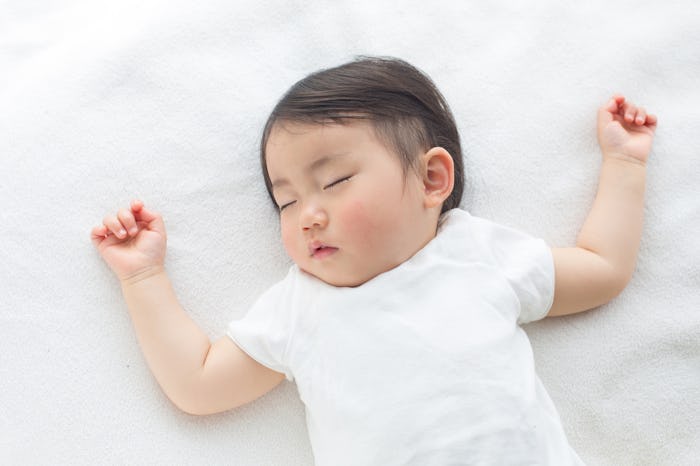Life

What Experts Want Parents To Know About White Noise Machines
White noise machines are the thing many parents swear by and rely on to keep their babies asleep. There's something to be said for not worrying about every little noise and how it may or may not impact your baby's rest. Noise machines are also crucial for families with older (read: rowdier) kids, especially when a brand new baby joins the fold. Convenience shouldn't trump sleep safety, though, so are white noise machines safe for babies? It turns out there a few risks sleep-deprived parents should take into consideration before using a white noise machine as part of their baby's sleep routine and/or sleep environment.
When most of us think of white noise machines, we think of the soothing sound of waves crashing, or perhaps even the hilarious frog and rainforest noises peeping from a tiny machine set next to an adult bed, like on that one episode of Sex in the City. Rarely, however, do us adults think about the decibel level those same white noise machines can reach. According to researchers at The Hospital for Sick Children in Toronto, many white noise machines can reach decibel levels that can damage a child's hearing if they are placed too close to the baby while they sleep, or used over long periods of time.
Todays' Parent goes on to report that, "Spending eight hours or more at 85 decibels or higher has been shown to cause hearing loss in adults," and many white noise machines designed for babies can exceed 85 decibels at their maximum setting and when placed in the crib with the baby.
So what can you do to ensure you're not damaging your baby's hearing? According to Parents, experts recommend keeping the decibel level down to neonatal intense care unit (NICU) regulation levels, which sit at about 50 decibels instead of the maximum 85. Experts cited in a study published by Pediatrics also recommend keeping the white noise machine as far from your baby in their room as possible.
If you're wondering how to check how many decibels your white noise machine emits, don't worry: there's an app for that. Simply hold your smart phone up to the white noise machine at the same distance as your baby would sleep from it, and you can read the approximate decibel level. Then you'll have a much better sense of how strong that noise might be for your baby.
Finally, experts suggest turning the white noise machine down or off once your baby has dozed off, so your little one isn't listening to the sound all night long. One of the biggest problems with white noise machines is that they are often left on for hours at a time, which can cause hearing damage. Hearing damage doesn't just happen when you hear a loud noise once, it can be caused by ongoing noise at a certain decibel level.
According to Today's Parent, 85 decibels is equivalent to the sound of a hairdryer or blender running. It doesn't seem like it would be too hard on your ears, that is until you think about listening to a blender for 8-12 hours at a time. If it didn't give you hearing loss, it would certainly give you a headache.
So if you're thinking of using a white noise machine to aid our baby in getting the sleep they need, be cognizant of the decibels omitted and the distanced between the machine and your baby, and you should be good to go. Who knows, maybe you'll be able to enjoy some of the sleep you need, too.